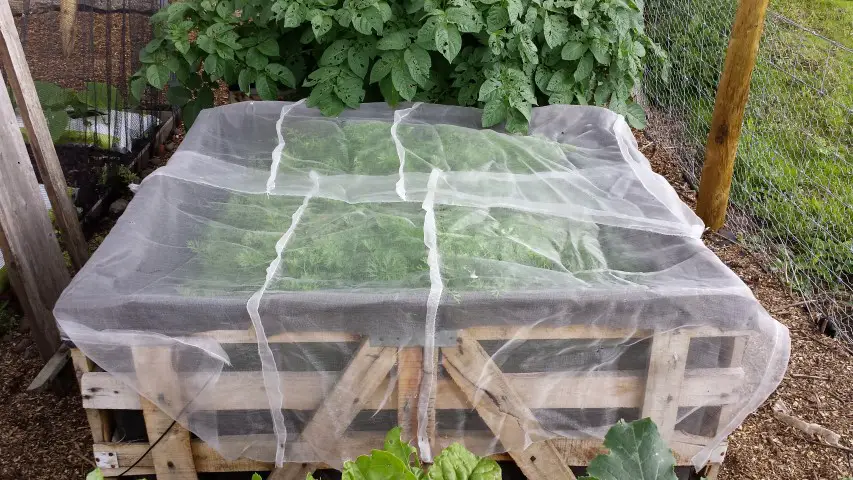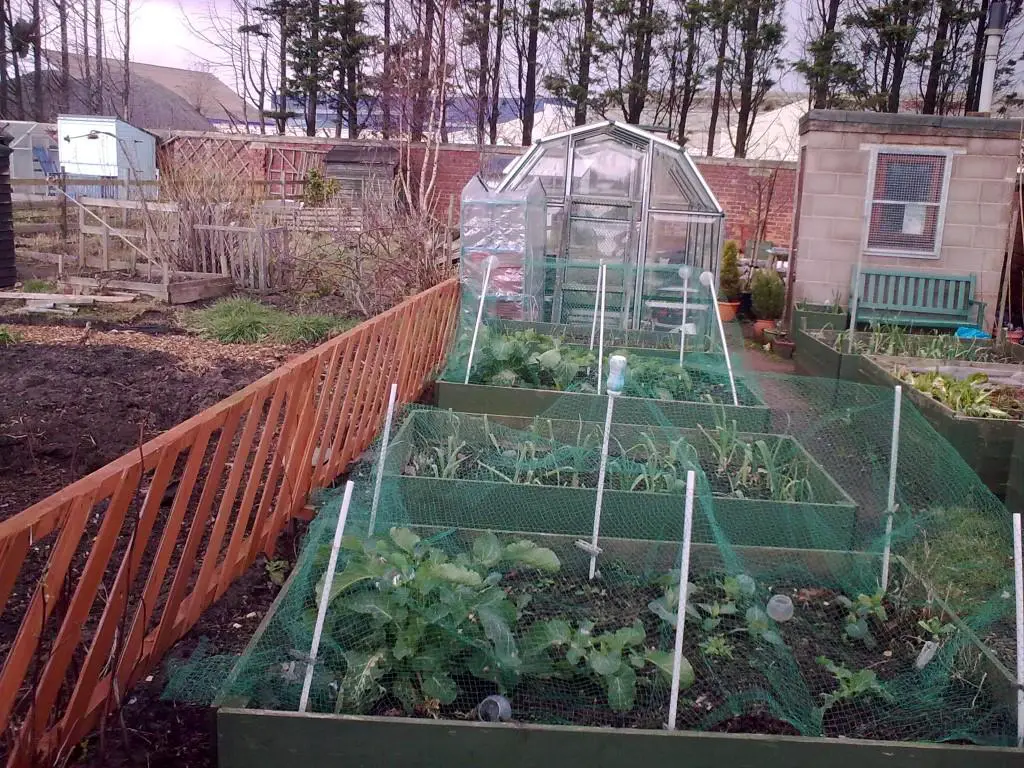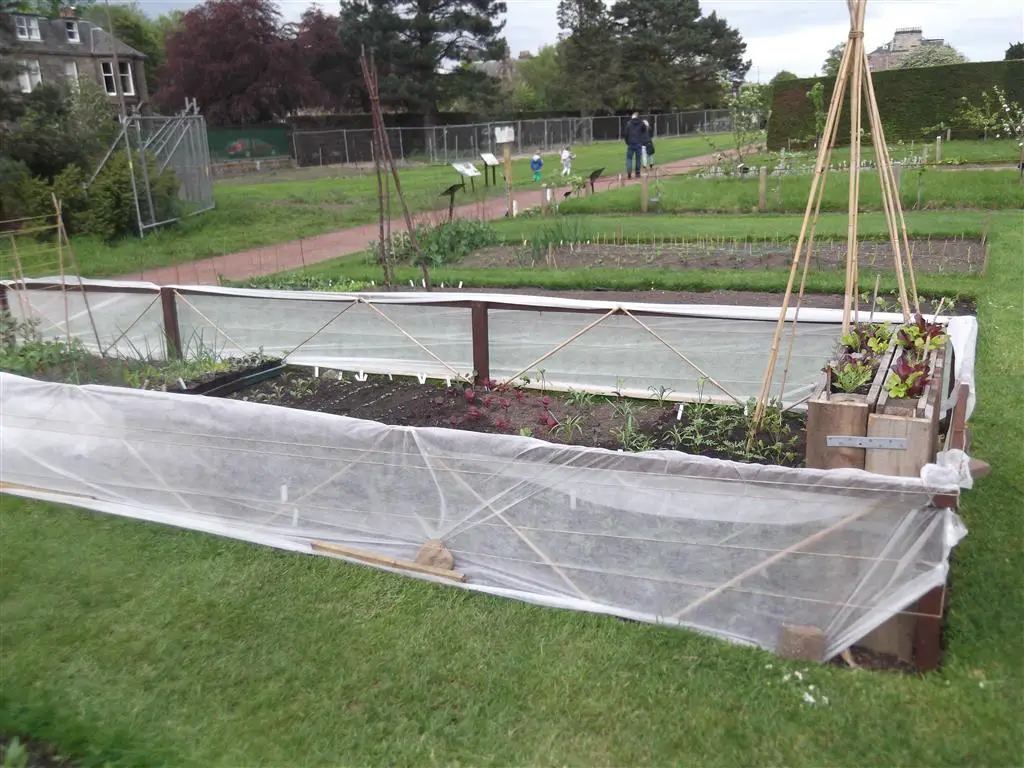If you are a keen vegetable gardener anxious to give your veggies the best chance of survival, then it is (in most cases) imperative that you have at least a basic understanding of the importance of fencing ideas to protect your vegetables through all the stages of growth.
There are many reasons for protecting your vegetables with fencing, and many materials that can be used to accomplish this goal.
Fencing can provide protection from animal incursion as well as insect infestation, and so the materials vary according to the potential threat to your vegetables.
What type of fencing is best for a vegetable garden?
So we have to consider the following when choosing an idea to suit your needs – is the fencing to provide protection from animals such as dogs, cats, rabbits, sheep, birds or wandering herbivores? Or Is it perhaps a barrier for a sensory garden arrangement?
If so, then you will need a robust fence perhaps sunk into the ground for a few inches that is capable of keeping these animals at bay.
Are you looking to keep away destructive pests such as the cabbage moth, carrot fly, slugs and other destructive creepy-crawlies?
If this is the case then you may have to think ‘outside the box’ a little and consider a more flimsy fence that nevertheless will protect your vegetables from pest damage.
With this in mind, I have some suggestions or ideas for fencing your vegetable garden that will suit most cases…
Garden fencing to protect against animals.
If you are troubled with pests such as rabbits or even stray dogs and foxes messing up your veggie patch, then a good sturdy wire mesh fence is probably your best hope.
Rabbits are fairly easy to keep at bay with this type of fencing, which doesn’t have to be more than 30 inches high to keep them at bay – which makes it easy to just step over.
For this fence simply hammer in posts around 6 foot apart and string 2 wires. 1 top and 1 bottom between the posts. Once you have strung the wire then dig a trench about 6 inches deep and a few inches wide – the width of your spade will be plenty.
Now you are ready to fix your wire mesh. Choose mesh no larger than 1 ½ inches to keep out baby bunnies as well as adults. Sink the mesh into the trench past the bottom wire and form an ‘L’ shape with it. The bottom of the ‘L’ is pointing out away from the enclosure and should be around 4 inches long. Fix along the wires with ties or special fencing clips.
Fill in the trench with the soil you dug out. The reason for the mesh in the trench pointing out in an ‘L’ shape, is that when the rabbit tries to dig under the fence it will encounter the fold in the mesh and will not be able to go any further.
Some people miss out the bottom tie-wire but I prefer to keep it in for general strength and aesthetic purposes, as without the bottom wire the fence looks a little scrappy!
To keep out larger animals such as dogs, then the fence would have to be at least 4 foot high. For Foxes then increase this to at least 6 foot high.

Timber Post and Rail fencing is also very effective against mammals of many types, and can be used in a variety of ways. Typically the rails or ‘slats’ are best set up vertically with only a 3/3 inch (19mm) gap between the slats for the free passage of air.
To keep burrowing or digging vermin at bay, follow the guidance for the mesh fence by simply adding a strip of wire mesh to the bottom of the fence.
Fencing to protect against insects and birds
Plastic Mesh Fencing can come in a variety of types and colours. This can be an option for general ‘enclosure’ purposes, but owing to the nature of plastic (it is fundamentally chewable) it is of limited value for keeping out 4-legged pests.
It is however very effective against flying pests such as the blackbird that can quickly devastate your fruit bushes in season.
Point of note – It is preferable to only cover your fruit trees or shrubs when they are actually about to ripen. Giving birds access to the shrubs before-hand, allows them to pick off any caterpillars and other destructive pests during the growing season.
Insect fencing? It may seem strange, but the fact is that flying insects such as the butterfly moth, whose caterpillars will destroy your legumes in short-shift, can very effectively be stopped with nylon butterfly mesh.
In this case the fence not only surrounds the vegetables, but is also arranged to completely cover them, thus preventing all access for the cabbage moth.
Alternatively, garden fleece can also be used to cover cabbage, broccoli, or cauliflower plants by completely covering the plant (loosely to permit growth) an covering the edge of the material to pin it to the ground.
Rainwater will permeate the garden fleece to keep the area around the plant moist. This is also an effective barrier against slugs and other creeping pests such as cutworm. It will also protect against the carrot fly.
to keep the area around the plant moist. This is also an effective barrier against slugs and other creeping pests such as cutworm. It will also protect against the carrot fly.
Alternatively, A simple fence made from canes and garden fleece arranged anything over 2 foot high (60cm) to surround your carrots and protect them against the carrot fly – which only flies around 24 inches from the ground.

Summary:
As you can see there are any number of ideas for fencing to protect your vegetable or fruit plants. It really does depend on what exactly you are trying to protect them against.
In general terms, the larger or stronger the potential pest, then the stronger the fence or barrier has to be in order to keep them at bay.
Insect and bird protection is usually lighter with smaller mesh sizes – right down to garden fleece which will keep out just about any insect.
Everything has to be considered when putting up your barrier, and this certainly includes access! Be sure that you are able to tend to your plants throughout the season, by keeping an easy access through whatever barrier you install.


